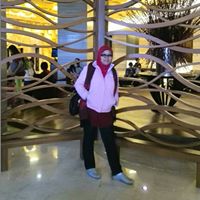Yuk Ying Li
age ~69
from Brooklyn, NY
- Also known as:
-
- Yuk Y Li
- Yukying Li
- Ying Liyuk
- Ming Li Hang
Yuk Li Phones & Addresses
- Brooklyn, NY
- Flushing, NY
- Queens Village, NY
- Queens Vlg, NY
Us Patents
-
Context Aware Biometric Authentication
view source -
US Patent:8255698, Aug 28, 2012
-
Filed:Dec 23, 2008
-
Appl. No.:12/343060
-
Inventors:Yuk L. Li - Colonia NJ, US
Padmaja Ramadas - Davie FL, US -
Assignee:Motorola Mobility LLC - Libertyville IL
-
International Classification:G06F 21/00
-
US Classification:713186, 705 51, 705 52, 709229, 709238, 455433, 455455
-
Abstract:A biometric sample of the user is received at a biometric interface of a device as part of a biometric authentication request by the user, with the biometric sample characterized by a match score when the biometric sample matches at least one stored template that uniquely identifies the user. The presence of a context usage override condition of the biometric authentication request causes a context usage factor to be updated based upon the context usage override condition. A biometric recognition threshold required for the user to access the application and indicative of a threshold security level required for biometric authentication is calculated based on the context usage factor. The user is permitted to access the application when the match score of the biometric sample is at least equal to the biometric recognition threshold.
-
Biometric Authentication Based Upon Usage History
view source -
US Patent:20100180127, Jul 15, 2010
-
Filed:Jan 14, 2009
-
Appl. No.:12/342621
-
Inventors:YUK L. LI - COLONIA NJ, US
PADMAJA RAMADAS - DAVIE FL, US -
Assignee:MOTOROLA, INC. - Schaumburg IL
-
International Classification:H04L 9/00
-
US Classification:713186
-
Abstract:Customized biometric authentication based at least in part upon usage history and learning capabilities of a user is provided. A biometric sample of a user received at a biometric interface of a device is compared with at least one stored template that uniquely identifies the user, and a match score generated when the biometric sample matches one of the stored templates. The match score is compared to a match score threshold value of an application that the user is attempting to access to generate match score comparison results, and an updated false reject ratio (FRR) for the last N matches of the user is calculated. The user is allowed to access the application when the match score comparison results indicate that the match score is at least equal to the match score threshold value and the updated FRR is less than a FRR threshold value of the application.
-
Systems And Methods For Composing And Providing Media Clips Using Distributed Computing Architecture
view source -
US Patent:20230052934, Feb 16, 2023
-
Filed:Aug 13, 2021
-
Appl. No.:17/402161
-
Inventors:- Basking Ridge NJ, US
Indraneel Sen - Livingston NJ, US
Yuk Lun Li - Morganville NJ, US
Dan Sun - Bridgewater NJ, US -
International Classification:H04L 12/58
H04L 29/08 -
Abstract:A system may include a first device and a second device. The first device may be configured to select a second device for providing a first User Equipment device (UE) with media clips in accordance with Application Programming Interface (API) calls from a second UE. The second device may be configured to: receive a first API call from the second UE to generate and provide a media clip; generate the media clip; and send the generated media clip to the first UE.
-
Systems And Methods For Securely Sharing Context Between Mec Clusters
view source -
US Patent:20210360500, Nov 18, 2021
-
Filed:May 13, 2020
-
Appl. No.:15/930758
-
Inventors:- Basking Ridge NJ, US
Yuk Lun Li - Morganville NJ, US
Manuel Enrique Caceres - Basking Ridge NJ, US -
International Classification:H04W 36/12
H04W 36/38
H04W 12/08
G06F 9/455
H04L 9/32 -
Abstract:A first network device may receive a notification over a network; in response to the notification, cause a virtualized operating system (OS) and a hypervisor of the first network device to obtain state units from one or more of first hardware components and virtual components; create a context state transfer package (CSTP) based on the state units; and forward the CSTP from the first network device to a second network device over the network. The second network device may receive the CSTP from the first network device; unpack the CSTP to obtain the state units; and put, at the second network device, second hardware components and virtual components of the second network device in a same state as the first hardware components and virtual components when the state units were obtained at the first network device.
-
Systems And Methods For Controlling Video Wall Content Using Air Gestures
view source -
US Patent:20210149496, May 20, 2021
-
Filed:Nov 20, 2019
-
Appl. No.:16/689541
-
Inventors:- Arlington VA, US
Yuk Lun Li - Morganville NJ, US -
International Classification:G06F 3/01
G06K 9/00
G06T 7/20
G06T 7/70
G06F 3/14 -
Abstract:A device may include a memory storing instructions and processor configured to execute the instructions to receive a video image stream of a scene. The device may be further configured to perform person detection on the received video image stream to identify a plurality of persons; perform gesture detection on the received video image stream to identify a gesture; select a person from the plurality of persons to associate with the identified gesture; and use the identified gesture to enable the selected person to control an object or area displayed on a video screen associated with the scene.
-
Systems And Methods For Managing Uplink And Downlink Throughput
view source -
US Patent:20210136755, May 6, 2021
-
Filed:Nov 1, 2019
-
Appl. No.:16/672009
-
Inventors:- Arlington VA, US
Indraneel Sen - Livingston NJ, US
Yuk Lun Li - Morganville NJ, US
Weimin Liu - Chatham NJ, US
Dan Sun - Bridgewater NJ, US -
International Classification:H04W 72/04
H04L 5/14 -
Abstract:A method may include receiving, at a wireless station, device capability information associated with a number of user equipment (UE) devices and determining, by the wireless station, uplink and downlink configurations for a number of carriers associated with the wireless station. The method may also include configuring uplink and downlink time slots for each of the carriers based on the determined uplink and downlink configurations and modifying the uplink and downlink configurations for at least some of the carriers over time based on data usage or congestion associated with the at least some of the plurality of carriers.
-
Content Stream Multicasting With Relative Latency For Media Devices
view source -
US Patent:20210112296, Apr 15, 2021
-
Filed:Oct 15, 2019
-
Appl. No.:16/653453
-
Inventors:- Arlington VA, US
Arvind BASRA - Glen Ridge NJ, US
Rohit SHARMA - White Plains NY, US
Yuk Lun LI - Morganville NJ, US -
International Classification:H04N 21/2662
H04N 21/239
H04N 21/6405
H04N 21/24
H04N 21/437
H04N 21/442
H04N 21/462
H04L 29/06 -
Abstract:A stream management platform may receive a request to provide, via a network, a content stream to an area, wherein the request indicates a requested latency associated with providing the content stream to the area. The stream management platform may determine an entry node of the network that is to receive the content stream from a content source. The stream management platform may identify a plurality of transmission nodes associated with the area. The stream management platform may determine respective latencies associated with multicasting the content stream from the entry node to the plurality of transmission nodes. The stream management platform may determine whether the respective latencies satisfy the requested latency. The stream management platform may perform, based on whether the respective latencies satisfy the requested latency, an action associated with the content stream according to the respective latencies.
-
Methods And Systems For Orchestrating Distributed Computing Resources
view source -
US Patent:20210099515, Apr 1, 2021
-
Filed:Dec 10, 2020
-
Appl. No.:17/118190
-
Inventors:- Basking Ridge NJ, US
Yuk Lun Li - Morganville NJ, US
Indraneel Sen - Livingston NJ, US -
International Classification:H04L 29/08
G06F 11/34 -
Abstract:An illustrative orchestration system is configured to provide, to a user equipment (UE) device communicatively coupled to a federation of compute clusters, cluster selection data for a subset of compute clusters from the federation of compute clusters. The cluster selection data is configured to facilitate the UE device in characterizing the compute clusters of the subset with respect to a service optimization policy. The orchestration system is further configured to receive, from the UE device, an orchestration request indicative of a compute cluster selected by the UE device based on the characterizing of the compute clusters of the subset. The orchestration system is configured to then orchestrate, in response to the orchestration request, fulfillment of a service request to be performed by the selected compute cluster for the UE device. Corresponding methods, systems, and devices are also disclosed.
Name / Title
Company / Classification
Phones & Addresses
Analyst
Thomson Reuters Corporation
Provider of Business Information/News Agency · Provides Business Information/News Agency · Business Consulting Services
Provider of Business Information/News Agency · Provides Business Information/News Agency · Business Consulting Services
3 Times Sq, New York, NY 10036
(646)2234000
(646)2234000
President
KWONG TUNG RESTAURANT, INC
Eating Place
Eating Place
5816 8 Ave, Brooklyn, NY 11220
Principal
QIANG JI RESTAURANT INC
Eating Place
Eating Place
5816 8 Ave, Brooklyn, NY 11220
Resumes

Tax Advisor
view sourceLocation:
Smithtown, NY
Work:
Block Advisors
Tax Advisor
At&T Jun 1984 - Sep 2013
Retired Technical Director
Tax Advisor
At&T Jun 1984 - Sep 2013
Retired Technical Director
Education:
Baruch College
Bachelors, Statistics New York University
Master of Business Administration, Masters, Finance
Bachelors, Statistics New York University
Master of Business Administration, Masters, Finance
Skills:
Microsoft Office
Customer Service
Microsoft Excel
Leadership
Microsoft Word
Research
Powerpoint
Public Speaking
Social Media
Marketing
Customer Service
Microsoft Excel
Leadership
Microsoft Word
Research
Powerpoint
Public Speaking
Social Media
Marketing

Yuk Gee Li
view sourceLocation:
Brooklyn, NY
Education:
City University of New York - Brooklyn College 2014 - 2015
City University of New York - Brooklyn College
Bachelors, Bachelor of Arts, Art
City University of New York - Brooklyn College
Bachelors, Bachelor of Arts, Art
Skills:
Customer Service
Microsoft Excel
Powerpoint
Public Speaking
Research
Microsoft Office
Microsoft Word
Microsoft Excel
Powerpoint
Public Speaking
Research
Microsoft Office
Microsoft Word

Yuk Leung Li
view source
Experience Designer
view sourceWork:
Pra Busines
Experience Designer
Experience Designer

Yuk Li
view source
Yuk Li
view source
Yuk Fai Li Parlin, NJ
view sourceWork:
First Investors Corporation
Aug 2012 to Present
Support Specialist M2 Auto Group LLC
Jan 2010 to Present
Title Clerk & Internet Manager Golden Computers
Union, NJ
Sep 2003 to Nov 2008
WAGFEG LLC DBA
Aug 2012 to Present
Support Specialist M2 Auto Group LLC
Jan 2010 to Present
Title Clerk & Internet Manager Golden Computers
Union, NJ
Sep 2003 to Nov 2008
WAGFEG LLC DBA
Education:
DeVry University
North Brunswick, NJ
Jan 2008 to Jan 2012
Network Communications Management
North Brunswick, NJ
Jan 2008 to Jan 2012
Network Communications Management
Youtube
Flickr
Googleplus

Yuk Li
Education:
BHS

Yuk Li
Plaxo

Yuk Li
view sourceMotorola

Yuk Li Astuti
view sourceFriends:
Budi Hernando, Tohirin Taufik Anshori, Yuk Li Astuti. Photo Log in to contact Yuk Li Astuti.
Yuk Li Astuti. Photo Log in to contact Yuk Li Astuti.

Yuk Li
view source
Yuk Mun Li
view source
Doris Man Yuk Li
view source
Kwan Yuk Li
view source
Yuk Yuk Li
view source
Siu Yuk Li
view source
Yuk Fai Li
view sourceClassmates

Penang Free School, Penang
view sourceGraduates:
Yuk LI Ju Yuk LI Ju (1981-1985),
Mohamad Hasrat Ali Ishwarz_pg (2001-2002),
Keat Chye Yeoh Keat Chye (1964-1968)
Mohamad Hasrat Ali Ishwarz_pg (2001-2002),
Keat Chye Yeoh Keat Chye (1964-1968)
Get Report for Yuk Ying Li from Brooklyn, NY, age ~69




![[Full Movie] Fong Sai Yuk | Martial Arts Action ... [Full Movie] Fong Sai Yuk | Martial Arts Action ...](https://i.ytimg.com/vi/e9FUgtvsOdQ/hq720.jpg?sqp=-oaymwEcCNAFEJQDSFXyq4qpAw4IARUAAIhCGAFwAcABBg==&rs=AOn4CLBlUmM3bLR15xA3kykj-rf1Ryeorw)








